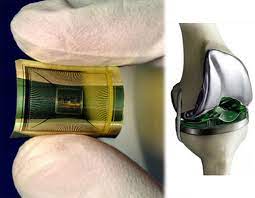 By offering patients with musculoskeletal injuries and disorders viable treatments, orthopedic implants have transformed the area of orthopedics.
By offering patients with musculoskeletal injuries and disorders viable treatments, orthopedic implants have transformed the area of orthopedics.
Traditional orthopedic implants have done an excellent job serving their goal, but recent technological developments have opened the door for innovations in this area.
With their capacity to track and react to physical alterations, intelligent orthopedic implants open up possibilities for better patient care and treatment results. Let’s study the idea of smart implants.
What Are Smart Implants?
Orthopedic devices, including sensors, microchips, and wireless communication capabilities, are often called smart, intelligent, or active implants.
These implants collect real-time data, monitor the surroundings, and react appropriately to improve patient care.
Orthopedic implants’ combination of electronics and sensors has created new opportunities for individualized therapy and better patient outcomes.
Latest Advances in Smart Orthopedic Implants
In recent years, intelligent orthopedic implants have made significant advancements. The creation of implants with sensor technology is a notable development.
These sensors can all detect temperature, pressure, strain, and even biological markers like pH levels or the presence of particular molecules.
This real-time data can provide insight into the healing process, infection detection, and implant effectiveness, enabling early intervention and individualized treatment strategies.
Innovative materials have been investigated for application in orthopedic surgical implants. These materials have unique qualities that allow them to respond to outside factors or degrade over time.
These materials provide advantages such as better implant integration, less need for stress shielding, and a lower possibility of long-term problems.
Applications of Smart Orthopedic Implants
There are many applications for smart orthopedic implants in different orthopedic specializations.
One major application for smart implants is joint replacements. They may track load distribution, range of motion, and wear patterns to provide information on implant function and patient recovery.
Fracture fixation is another area of application. Smart implants can track the healing process, identify issues like non-union or infection, and give doctors immediate feedback.
Making informed judgments on the necessity for additional surgeries or the time of implant removal can be made easier with the help of this information.
Advantages of Using Smart Orthopedic Implants
Smart orthopedic implants have several benefits over conventional implants. Firstly, these implants make individualized medication possible by offering real-time information on patient-specific factors.
This information can be utilized to modify recovery procedures, personalize treatment strategies, and improve surgical results.
Second, smart implants help in early complication diagnosis. Potential problems can be quickly discovered by continually monitoring implant performance and patient physiology, enabling immediate intervention and lowering the chance of long-term consequences.
Challenges and Limitations of Smart Orthopedic Implants
Smart orthopedic implants have a lot of potential, but several issues must be resolved. Incorporating electronics and sensors into tiny implanted devices is a serious issue.
It is essential to guarantee these components’ lifetime, biocompatibility, and dependability to prevent implant failure or unfavourable bodily reactions.
The safe and effective data transfer from the implant to external equipment or medical personnel is another difficulty.
When designing and implementing smart orthopedic implants, ensuring data privacy, reducing power consumption, and building a solid communication infrastructure are crucial.
Future Outlook for Smart Orthopedic Implants
Despite these difficulties, the future of intelligent orthopedic surgical implants appears bright. Engineers and researchers are still working to improve these implants’ integration, functionality, and design.
As technology develops, we can anticipate increasingly advanced sensor systems, smaller electronics, and improved wireless communication skills.
Smart implants could one day actively distribute medications or other therapeutic compounds to specific areas, boosting quicker healing and lowering the risk of problems.
They may also be combined with AI algorithms to give medical personnel real-time feedback and decision support during operations or rehabilitation.
FAQs
How do smart implants differ from traditional orthopedic implants?
Smart orthopedic implants incorporate sensors, microchips, and wireless communication capabilities compared to conventional orthopedic surgical implants.
How do smart implants improve patient outcomes?
Smart implants improve patient outcomes by providing specific therapy and early complication diagnosis. They offer real-time information on patient-specific factors.
How affordable and accessible are smart orthopedic implants for patients?
Due to the incorporation of electronics and sensors, smart orthopedic implants may cost more than traditional implants. Cost continues to be a barrier to widespread adoption.

